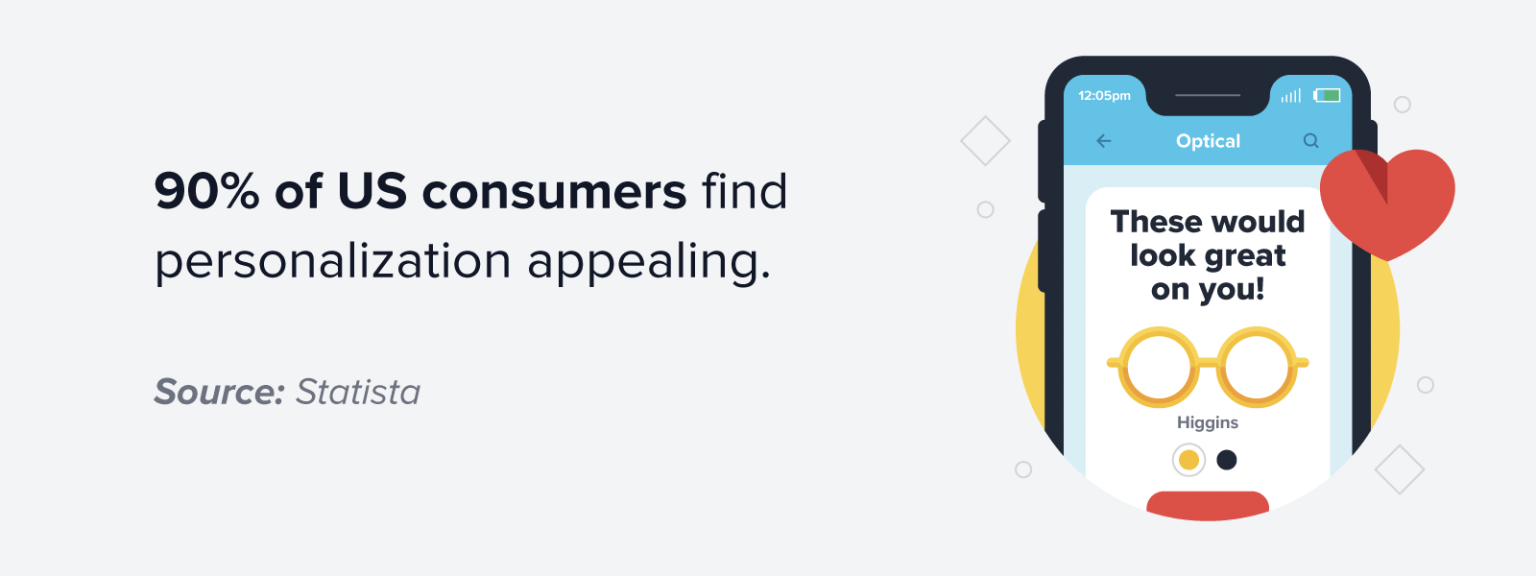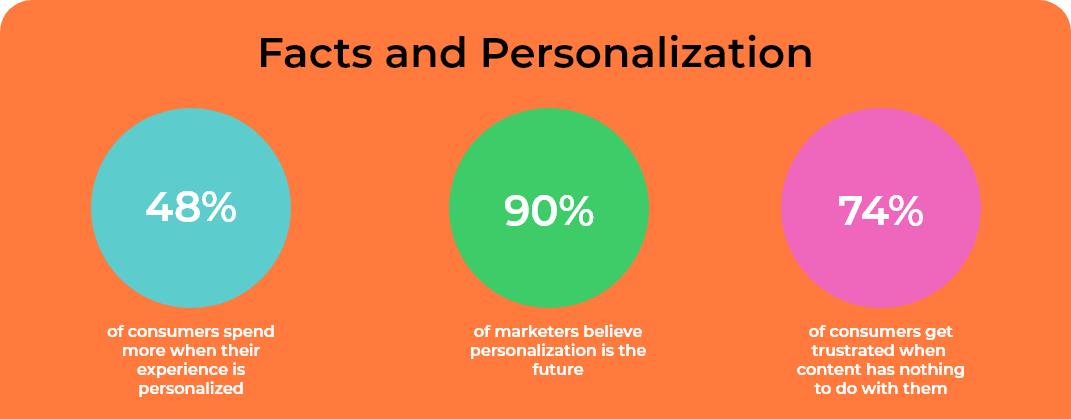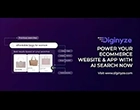
In the rapidly evolving digital commerce landscape, eCommerce personalization has emerged as a pivotal strategy for businesses aiming to stay competitive and achieve peak customer loyalty. This approach involves delivering personalized content, recommendations, and offers to visitors based on a wide array of data sets such as visit history, traffic source, geolocation, behavior, and device. The ultimate goal is to segment visitors by persona and present targeted and personalized content to them, resulting in higher conversion rates, improved user experience and customer satisfaction.

Image Credit: CleverTap & Statista
Read also: How AI-Powered Conversational Commerce is Transforming Online Shopping
eCommerce Personalization: An Overview
eCommerce personalization aims to create a seamless, engaging shopping experience for customers by providing tailored content based on their unique behavior and preferences. The concept might sound simple, but executing it effectively is quite challenging. Traditional methods that directly ask visitors for their preferences can often backfire, resulting in lost visitors and potential reputation damage.
To avoid these pitfalls, businesses have turned to subtler methods of gaining customer insights: micro-conversions and micro-interactions. Micro-conversions involve brands offering free, valuable products such as newsletters or gated content in exchange for a visitor's contact information, whereas micro-interactions involve tracking a visitor's behavior as they navigate through a site. Both methods provide brands with invaluable insights that can be used to enhance customer experiences and drive sales.
The Power of Micro-conversions and Micro-interactions
With the advent and adoption of AI and machine learning in eCommerce, brands are now able to analyze inbound traffic sources, score visitors based on browsing behavior, and create seamless integration between content and commerce. For returning customers, brands can leverage buying history to provide personalized experiences and targeted product recommendations.
For customers who have added items to their cart, brands can use integrated eCommerce marketing strategies to push positive reviews and targeted offers to minimize pre-purchase exits. If a sale is missed, brands can employ strategies such as offering an incentive for the customer to return and complete their purchase or providing a shortcut to their cart when they return.
Read also: Top 5 eCommerce User Experience Trends to Watch Out For
The Importance of Friction in Personalization
Contrary to traditional user experience design philosophy, a minimal level of friction is not only acceptable but also necessary. A bit of friction, in the form of micro-conversions and micro-interactions, can enhance the purchasing experience. In fact, 90% of visitors are willing to share data if it improves their purchasing experience, and 40% are more likely to view items recommended based on the information they've shared with a brand.

Image Credit: Smart Insights
Designing E-commerce Personalization
There's no one-size-fits-all method for eCommerce personalization. However, brands can start by auditing all touchpoints and channels that make up the end-to-end customer journey and identifying where to deploy micro-conversions and micro-interactions. The goal is to develop an optimized customer journey that nurtures prospects, leading to a sale and fostering customer loyalty.
Overcoming Obstacles with Auto Personalization
Auto personalization, powered by AI and machine learning, can overcome many challenges faced by brands in eCommerce personalization. It can identify and update dynamic customer segments, enable marketers to accurately track ROI, accelerate time-to-market, and free marketers from repetitive, time-consuming tasks.
Best Practices for eCommerce Personalization
When it comes to optimizing eCommerce personalization, there are several best practices. These include starting with a few personalization rules on different pages, using A/B testing to split customer segments, generating high volumes of content, avoiding silos within marketing operations, and balancing the need for data collection with respect for customer privacy.
AI can analyze large datasets to identify different customer segments based on their behavior, preferences, and buying patterns. Businesses can then tailor their marketing strategies to each segment, delivering more relevant and effective campaigns.
Read also: 10 Types of Online Shoppers and How to Sell Them
The Road Ahead
With the inflating number of online shoppers, the importance of eCommerce personalization will continue to grow. eCommerce personalization is not just about recommending products based on a user's browsing history, but it is about creating a unique, engaging, and seamless shopping experience for each customer. The rise of AI and machine learning has made it possible for e-businesses to analyze vast amounts of data and use these insights to deliver highly personalized experiences.
Ready to revolutionize your eCommerce business with AI-driven personalization? Don't wait! Begin your journey today with Diginyze, an all-in-one and intelligent AI-powered eCommerce platform and unlock new levels of customer engagement, satisfaction, and loyalty.
Contact our team of eCommerce AI experts to explore the best personalization strategies tailored for your online business.
Recent Blogs
Explore latest insights and trends in technology and eCommerce.
Case Studies
Your Digital Transformation Starts Here!
Join thousands of businesses transforming with Diginyze. Sign up today and start now!


























